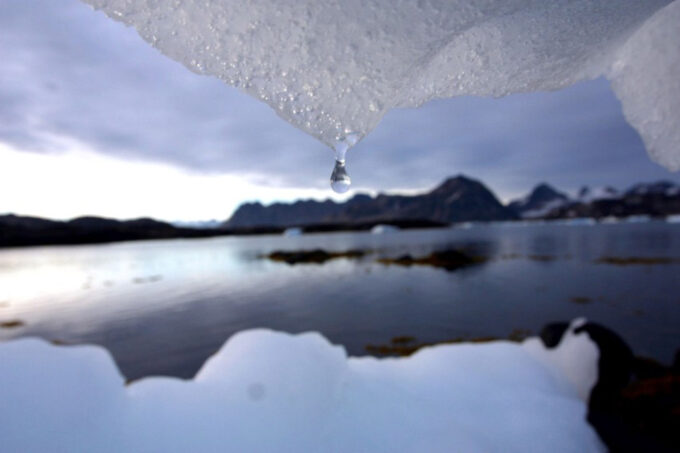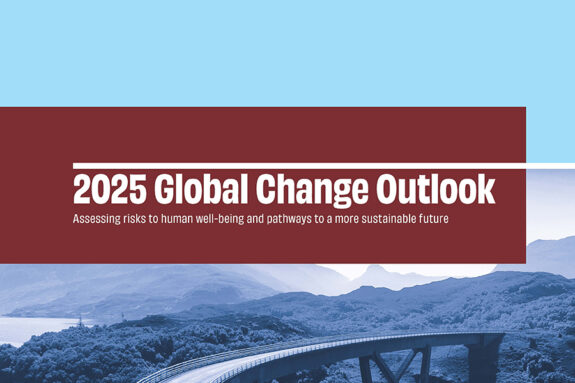Navigating the energy transition

ILP-MIT Joint Program webinar explores climate-related physical and transition risks
Many world regions face increasing pressures from global and regional changes in climate, population growth, urban-area expansion, and the socio-economic impacts of fossil-based development. Human interference in the global climate system contributes significantly to changes in regional and local extreme weather and climate patterns.
To help decision-makers in the public and private sectors navigate these developments, the MIT Joint Program on the Science and Policy of Global Change and the MIT Industrial Liaison Program presented a webinar on November 17 focused on understanding and managing climate-related risks. These consist of “physical risks” that are related to damage from climate events such as floods, droughts, wind and extreme temperatures, as well as “transition risks” that arise from shifts in the political, technological, social and economic landscape that are likely to occur during the transition to a low-carbon economy.
Effective management of physical and transition risks will require new and upgraded approaches and tools that represent both concerns in an integrated framework, and that incorporate input from financial institutions and regulators, said Ronald Prinn, Director of the MITs Joint Program and the MIT Center for Global Change Science (CGCS), and TEPCO Professor of Atmospheric Science at the MIT Department of Earth, Atmospheric and Planetary Sciences (EAPS), in introductory remarks. Prinn emphasized the need for affordable and equitable solutions for mitigating and adapting to these risks.
Assessing climate risks and the role of low-carbon energy
In a presentation on assessing physical risks to natural and managed land, water and energy resources, Joint Program Deputy Director and CGCS Senior Research Scientist C. Adam Schlosser observed that while physical risks abound, we have the capability to identify opportunities to respond to them. To quantify these risks, he said, we’ll need to assess all plausible futures across all economic sectors; to manage them, we’ll need to set science-based targets that include climate and health metrics, and to design end-to-end, equitable, sustainable solutions. Finally, critical to science-based assessment and management of physical risks is the acquisition of data.
Schlosser highlighted a Joint Program study that used the program’s Integrated Global System Modeling (IGSM) framework to project global changes in water availability by 2050. The study found that while two billion people will likely experience water stress—insufficient water resources to meet demand—by that time due to climate change and economic growth, aggressive climate action could buy time to reduce its magnitude.
“In a world where we would imagine that we’re doing everything we can to mitigate climate change, we add about thirty extra years to allowing ourselves to prepare for these risks that would have evolved by 2050,” said Schlosser, pointing to higher water efficiency standards as one adaptive measure.
In a presentation on assessing transition risks, MIT Joint Program Deputy Director and MIT Energy Initiative Senior Research Scientist Sergey Paltsev emphasized the need for decision-makers in industry to conduct integrated analyses of physical and transition risks, to recognize that the ongoing energy transition applies to all economic sectors and emissions sources, and to use scenario analysis for assessment and disclosure of climate-related risks to financial regulators and investors.
Paltsev, who directs the MIT Energy at Scale Center, offered a three-point plan for companies to manage transition risk successfully.
“Report your emissions, actively engage in risk management, and identify opportunities for value creation,” he said. “It’s better to be ahead of the game and look for those opportunities and make sure that you’re on the path to environmentally friendly growth.”
A presentation by Jill Engel-Cox, who directs the Joint Institute for Strategic Analysis at the National Renewable Energy Laboratory, explored risks and opportunities in the deployment of renewable energy technologies throughout the energy transition. Focused primarily on electric power, Engle-Cox shared several projections for the future of renewables in the United States. She noted that renewables already constitute about 20 percent of energy sources used to generate electricity, a figure that rises to about 50 percent by 2050 in the midpoint of the latest NREL projections; that rapid penetration of renewables, coupled with increased demand from the electrification of transportation and other sectors, will pose challenges to grid operations while expanding job opportunities; and that the energy supply chain will intensify demand for certain minerals and metals, and pose risks and opportunities for the environment.
“All energy transitions have positive and negative impacts,” said Engle-Cox, citing the shift from animal power to oil and gas as an example. “The key is to anticipate and to mitigate them before they happen.”
Identifying climate risk challenges and opportunities
Schlosser, Paltsev and Engel-Cox were joined by MIT Associate Professor Noelle Eckley Selin (EAPS and Institute for Data, Systems and Society) in a panel discussion on climate risk challenges and opportunities moderated by Joint Program Founding Co-Director Emeritus and MIT Sloan School of Management Professor of Management Emeritus Henry Jacoby.
Concerns highlighted in the discussion included how to: choose the best zero-carbon energy sources for energy storage systems required to compensate for the intermittency of solar and wind power generation; access the computational and power resources needed to assess climate risks to energy, water and agriculture systems at regional and local levels; determine which scenario analyses and modeling tools to trust to inform decision-making about physical and transition risks; and design more sustainable interactions among systems, institutions and people so as to reduce those risks.
The final question to the panel was to identify the biggest knowledge gap in climate risk management. Responses included the need to obtain data from business and industry to enable more precise assessment of transition risk, to better evaluate which emerging energy technologies will be economically competitive, and to more precisely represent human behavior in economic models used in such evaluations.
Noelle Selin pointed to a shortcoming in the way people tend to think about risk and transitions in general: focusing on marginal or incremental change rather than fundamental change.
“When you’re applying methods and approaches and models that need to be transformed from marginal into fundamental, this requires a new way of thinking,” she said. “And I think that’s the biggest challenge: developing the tools and also the mental models in that new way of thinking.”
Story Image: Water dripping from ice (Credit: Flickr/klem@s)


